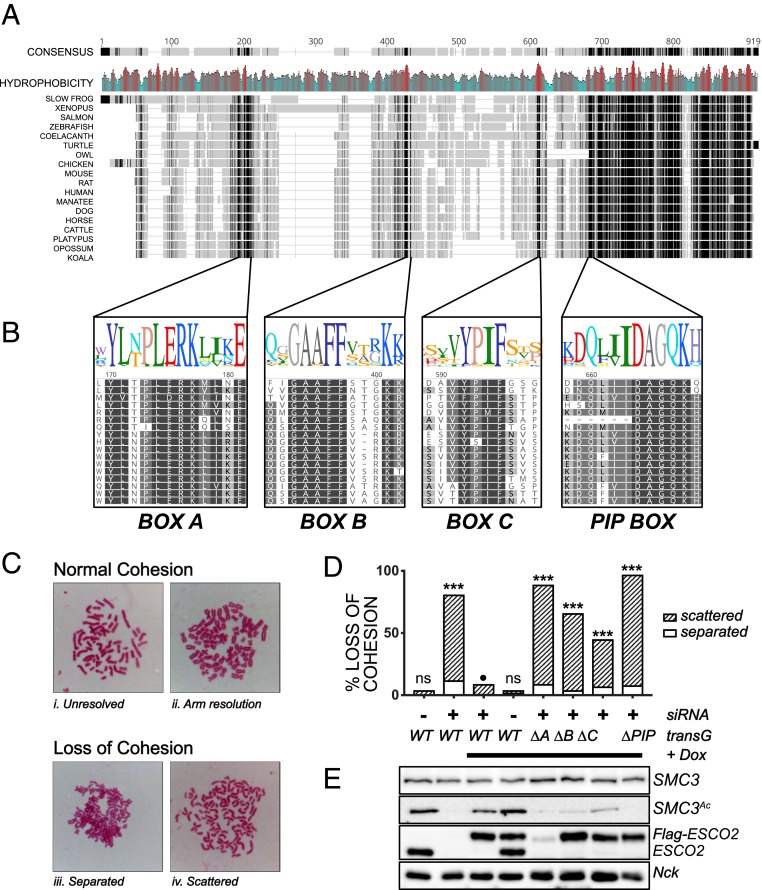Fig. 3.
Sequences in the N terminus of ESCO2 are required for cohesion establishment. (A) The N terminus of ESCO2 contains several short, conserved motifs. Clustal Omega alignment of ESCO2 proteins from the indicated species is shown. The overall consensus is shown at Top, in which the grayscale indicates the degree of conservation (black is 100% and the lightest gray is <60%), and gaps are shown with a gray line. Mean hydrophobicity is also shown, with red indicating hydrophobic patches. Accession nos. are in SI Appendix, Table S1. (B) Enlargement of conserved motifs in the ESCO2 N terminus. The alignment of the 3 motifs, box A, box B, and box C, as well as the conserved PIP box, are shown. Sequence logos are colored according to the RasMol scheme (52). (C) Representative chromosome spreads as analyzed to score sister chromatid cohesion. Categories i and ii, in which sister chromatids were clearly tethered together, were considered normal cohesion, while chromatids that were well separated, as in categories iii (separated) and iv (scattered), were scored as loss of cohesion. (D) Cohesion assay. HeLa cells expressing siRNA-resistant FLAG-tagged derivatives of ESCO2 with the indicated mutations were treated with siRNA against ESCO2 to deplete endogenous transcripts and were scored for cohesion as shown in C (n ≥ 100/sample). ***P < 0.005 compared to wild-type (WT) control indicated by the black circle (Fisher’s exact test with Bonferonni’s correction for multiple comparisons; ns, not significant). Shown is a representative experiment; each mutant was tested at least 4 times independently (data from additional experiments are summarized in SI Appendix, Table S2). (E) Immunoblot showing expression of ESCO2 transgenes and SMC3 acetylation. Cell lysates from samples in D were probed with antibodies for the indicated proteins. SMC3Ac, NCK, and ESCO2 came from the same gel. NCK was used as a loading control. SMC3 and ESCO2 were analyzed separately. Tg, transgene; Dox, doxycyline (used to activate expression of transgenes).

